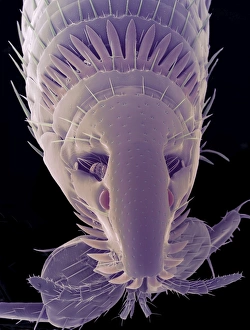Ctenidia Collection
Ctenidia, also known as comb-like structures or gills, play a crucial role in the respiratory system of various flea species
All Professionally Made to Order for Quick Shipping
Ctenidia, also known as comb-like structures or gills, play a crucial role in the respiratory system of various flea species. These microscopic wonders can be observed under scanning electron microscopy (SEM), revealing intricate details and adaptations. In the world of fleas, different species have evolved unique ctenidia to suit their specific hosts. The SEM images showcase this diversity, starting with the Cat flea's ctenidia resembling delicate combs that aid in respiration. Moving on to the Rabbit flea, its SEM image reveals similar comb-like structures adapted for survival on rabbits. The Squirrel flea's SEM image unveils its specialized ctenidia designed for efficient gas exchange while infesting squirrels. Likewise, the Hedgehog flea exhibits distinct comb-shaped gills seen through SEM that enable it to thrive on hedgehogs. Notably, even among fleas targeting dogs, variations in ctenidia structure are evident from their respective SEM images. The Dog flea boasts intricately arranged gill-like projections that facilitate oxygen uptake during its parasitic lifestyle. Zooming closer into these fascinating creatures' anatomy using SEM allows us to explore minute details like never before. Captivatingly detailed close-ups of cat and dog flea heads captured by SEM reveal not only their unique mouthparts but also provide insights into how they adapt to feed on their respective hosts effectively.





